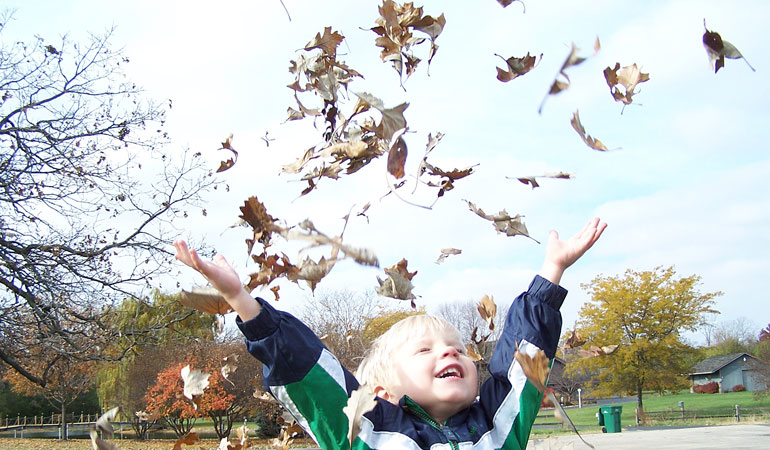You’ve probably been telling your child her adoption story from the first day she came home. In the early years, adoption talks are generally one-sided. By the time she’s three, a child may be able to adorably recite the entire tale, or joyfully chime in at her favorite parts. But the conversation is about to get much more interactive.
Three- to five-year-olds are famous for asking a lot of questions, so you can expect that your child will have questions about adoption. Yet keep in mind that preschoolers are literal thinkers and cannot understand abstract concepts. For example, when Tess, a four-year-old from New York City, heard that a boy was “put up for adoption,” she thought that he had been put up on a shelf. Until a child understands something about birth and reproduction, he cannot truly differentiate birth and adoption as ways of forming a family. All children at this stage are egocentric, so if he gives it any thought, an adopted child will probably assume that all children join their families by adoption.
Although preschoolers understand very little about what being adopted really means, they can become familiar with some of the language and grasp the emotional message that adoption means they are loved. As you talk with your preschooler, think about it as laying a foundation for later conversations. Here are five developmental tasks your three- to five-year-old is ready to work through, and how you can encourage exploration.
Learn Some Adoption Language
When children are very young, your tone and your comfort with the topic are as important as the facts, so you can stick to a simple version of his story. Think of it as a sketch that you’ll fill in with more details. The only caveat is to be honest and avoid saying anything you’ll have to contradict later.
You may want to start by sharing the excitement you felt when you received the telephone call about her, the frantic trip to meet her, and how thrilled everyone in the family was to welcome her home. Briefly mention the birth parents. In her book, Over the Moon, Karen Katz beautifully states: “You grew like a flower in another lady’s tummy until you were born. But the lady wasn’t able to take care of you, so Mommy and Daddy came to adopt you and bring you home.”
If you start talking early, adoption becomes a natural topic for your child and you. Follow your child’s lead in giving more information. Curious as he may be, your child’s questions will probably be simpler than you expect.
Find Out Whose Tummy They Grew In
Around age four, a child will see a pregnant woman and ask her mom, “Did I grow in your tummy?” While this may startle you, it is important to keep in mind that, to your child, this is not an adoption issue. This is a magical regressive wish that all children this age have, whether they were born to or adopted by their parents.
Sometimes, out of their own anxiety, parents explain more than their child is asking. Keep your response simple and honest. When children learn of the existence of their birth mother, they may think of her as an intruder and wish they had grown inside you, the mother they know and love. Chris, a five-year-old, from Miami, Florida, seemed sad when his mom told him about his birth mom. He said, “I don’t want her in my story.” If your child reacts this way, reassure him about your relationship and acknowledge that he’s expressing a wish to be close to you: “I know you feel sad. I feel sad, too, but I feel as close to you as if you grew in my tummy. I love you.” [See “Words You Can Use,” for more sample dialogue.]
Understand That They Were Born, Like Other Children
Adoptive parents sometimes skip the birth step when telling their young child his story. They may say, “Mommy and Daddy couldn’t make a baby, so we called an adoption agency. They found a baby for us, and that was you.” Other parents start talking about adoption by focusing on the child’s birth country. Lily, age five, from Lawrenceville, New Jersey, thought she was born “from China.” Keep in mind that preschoolers are literal thinkers. It is not unusual for a child this age to conclude that “adoption” means being hatched, delivered by plane, or some other non-natural process. Include your child’s birth in her story even if you know little about it; your child needs to know that she was born normally, like any other child.
Between the ages of four and six, children begin to ask where babies come from. Although parents are probably nervous about explaining the birds and the bees, children are usually unabashed and eager for information. Let your child know that it takes a man and a woman to create a baby, and that, following a period of gestation, the baby is born. This is a good time to mention the birth father, if you haven’t already. If birth fathers aren’t mentioned, it’s not uncommon for children to believe that their adoptive dad is their birth father.
This very basic information about reproduction and birth will be valuable in helping your child understand the concept of adoption. Your talk may also awaken painful memories about your infertility, if that was the reason you chose adoption. Discussing birth and the creation of families with your child can be an enriching—and freeing—experience for the whole family.
Realize That He Has Birth Parents
Preschoolers begin to differentiate between birth and adoption as different ways of entering a family, and to realize that they have two sets of parents. They’ll start asking questions that they’ll pose many times over, in different forms, in the years to come. Why did they place me? Did they give me up because something is wrong with me? Children tend to feel responsible for whatever happens to them, and may worry, Maybe I cried too much, didn’t eat enough, and so on. Reassure your child that nothing he did or didn’t do led to his being placed for adoption, and that his birth parents could not take care of any baby because of their own situation.
On the other hand, don’t give the impression that something is wrong with his birth parents. Even if you have troubling information about the birth parents, try to send the message that they did their best, given their circumstances. At this age, your child needs to feel that he was born to good people.
Don’t tell a preschooler, “She placed you because she loved you.” This may only lead your child to worry that you, her loving parent, could place her again. Are my birth parents OK? Are they worried about me? Knowing that their birth parents are real people whom they don’t know can trigger some complex feelings. Greg, a five-year-old, became hysterical at bedtime and said he wanted to go home to Russia. His mom took this as a personal rejection. When she got up the courage to ask him why, Greg said, “I want to tell my birth mother I am happy and not to worry about me.”
Preschoolers benefit from expressing their feelings in concrete ways. Have your child draw a picture or dictate a letter to keep in a special place (or to send, if that is an option). Or use dolls or stuffed animals to act out your child’s adoption story.
Notice Differences in Physical Appearance
If your child is of a different race, or has clearly different physical features, from your family, she’ll become aware of this around age four. She may notice it herself, or overhear someone commenting on her appearance. Explain that the birth process is the same for everyone, but that people from different cultures have distinguishing physical features and their own rich heritage.
Although it is tempting to smooth over your differences, you should acknowledge them and help your child take pride in his cultural and racial heritage. When five-year-old Ella asked her dad why her skin was darker than his, he replied, “It’s not. I tan in the summer, and we look alike.” When she asked her mom the same question, she was told, “You have dark skin because you inherited your birth father’s Mediterranean complexion.” Ella responded, “You’d better write Daddy an e-mail!”
It’s common for children this age to think, “Mommy’s color is the most beautiful.” If your child says she wishes she were “____, like you,” acknowledge the difference and tell her how beautiful you think she is.
The most important goal at this stage is to create an open, empathic family atmosphere in which adoption is freely discussed and all questions are welcome. Laying this foundation will serve you and your child well in years to come, as her feelings about adoption become more complex, or if you have negative information to share.
Children who learn at an early age that it’s alright to be curious usually carry this idea over to school and other venues for learning. In this way, your early talks about adoption will help build a strong self-confidence that will carry your child through childhood and beyond.


